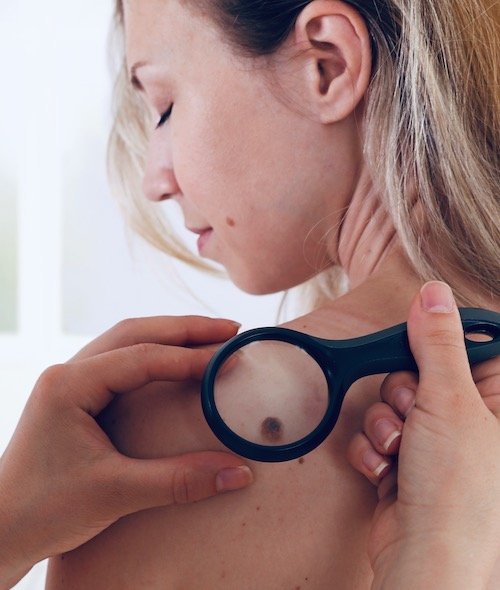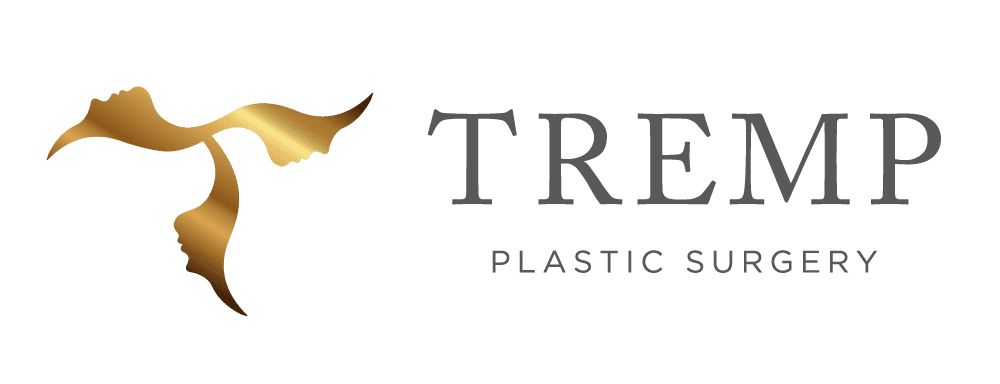- About
- Face & Skin
- Cellulite treatment
- Excessive sweating in women and men
- Facial and skin treatments
- Facial Surgery
- Hydrafacial treatment
- IV drips (vitamin infusions)
- Laser treatment
- Lip Lift
- Mesotherapy (skin structure )
- Special Offers by TREMP PLASTIC SURGERY
- Treatments with Skin Ceuticals
- Wrinkle and facial treatments with botulinum
- Wrinkle and facial treatments with filler
- Face
- Breast
- Body
- Offers
- Blog
- Contact
- EN
- DE
The term “tumour” is often mistakenly equated with “cancer”. Not all skin tumours are malignant and need to be treated. In addition to malignant skin tumours such as malignant melanoma (black skin cancer), spinalioma (prickle cell cancer) or basalioma (white skin cancer), there are preliminary stages such as actinic keratosis or Bowen’s disease.
There are also benign skin tumours such as moles, connective tissue tumours, lipomas (benign fatty growths), haemangiomas (blood sponges) or age warts.


What are the risk factors for malignant skin tumours?
The most important risk factors are malignant skin tumours (especially black skin cancer) in the family, many atypical moles, frequent sunburns (especially with spinalioma) and a light skin type.
What is the most malignant form of skin cancer?
Black skin cancer is the most malignant of all skin cancers. Melanoma can grow quickly and can lead to “offshoots” (metastases) early on. Therefore, early and rapid treatment is very important.
What does black skin cancer look like?
Malignant melanoma can look very diverse and there is a risk of confusion with a birthmark or “age wart”. Black skin cancer can also develop in areas of the skin that are not primarily visible, such as the scalp or mucous membrane.
If you observe a noticeable skin change, the skin spot becomes larger and you have new itching, for example, then you must show the skin change to the specialist.
What is the surgical treatment for black skin cancer?
After the diagnosis has been confirmed by a tissue sample, the black skin cancer must be removed with a so-called safety margin. The safety distance is determined by the so-called tumour thickness (“Breslow level”).
But a certain size of Breslow also requires a sentinel lymph node biopsy.
Can spinalioma or basalioma make offshoots?
Spinalioma grows much more slowly than malignant melanoma and very rarely makes offshoots. Basal cell carcinoma is slow-growing and does not usually metastasise.
What is the surgical treatment for white skin cancer?
The complete removal of the white skin cancer is important. The surgical removal is performed with a safety margin. If the white skin cancer is difficult to demarcate or in an aesthetically delicate region, a so-called rapid incision-controlled removal can be performed.
This means that during the operation a pathologist checks whether the entire tumour has been removed. Another option is first to remove the tumour and cover it with artificial skin, and then a week later to reconstruct it once the tumour has been completely removed.
How is the operation performed?
A simple removal can often be performed under local anaesthesia on an outpatient basis. If desired and in the case of larger skin changes, the procedure can also be performed under twilight sleep.
In the face and with larger changes, reconstruction often requires so-called displacement flaps or a skin graft. The removal of the sentinel lymph node is usually performed under general anaesthesia.
What is the aftercare like?
After suture removal, regular scar massage with a fatty or oily ointment is important. You should also use a sunscreen SPF 50 as soon as the wound has healed.
After the surgical treatment, you must have a specialist dermatologist examine you at regular intervals.
Cost absorption by the health insurance fund?
The costs for surgical skin interventions that take place within the framework of medically necessary examinations are charged according to the Tarmed tariff. This tariff is regulated throughout Switzerland.
The costs for skin operations of a purely cosmetic-aesthetic nature, on the other hand, are not paid by the health insurance funds and must be covered by the patient. Payment for the service at the private rate is due directly on the day of treatment. We will provide you with a non-binding offer after a consultation. You can pay your bill with a Maestro, a credit card (Mastercard or Visa) or in cash.
July 19, 2024

